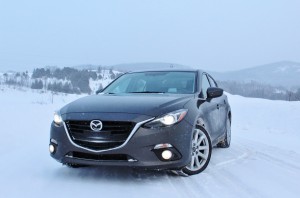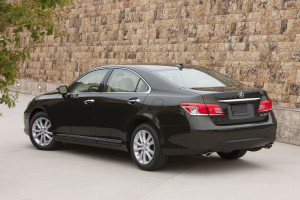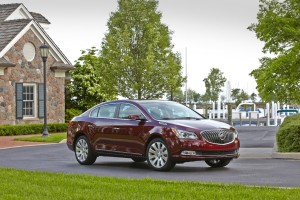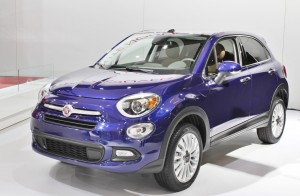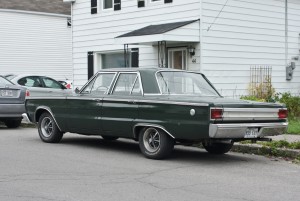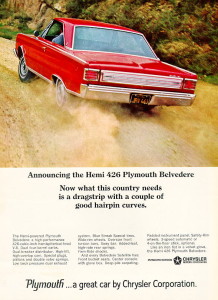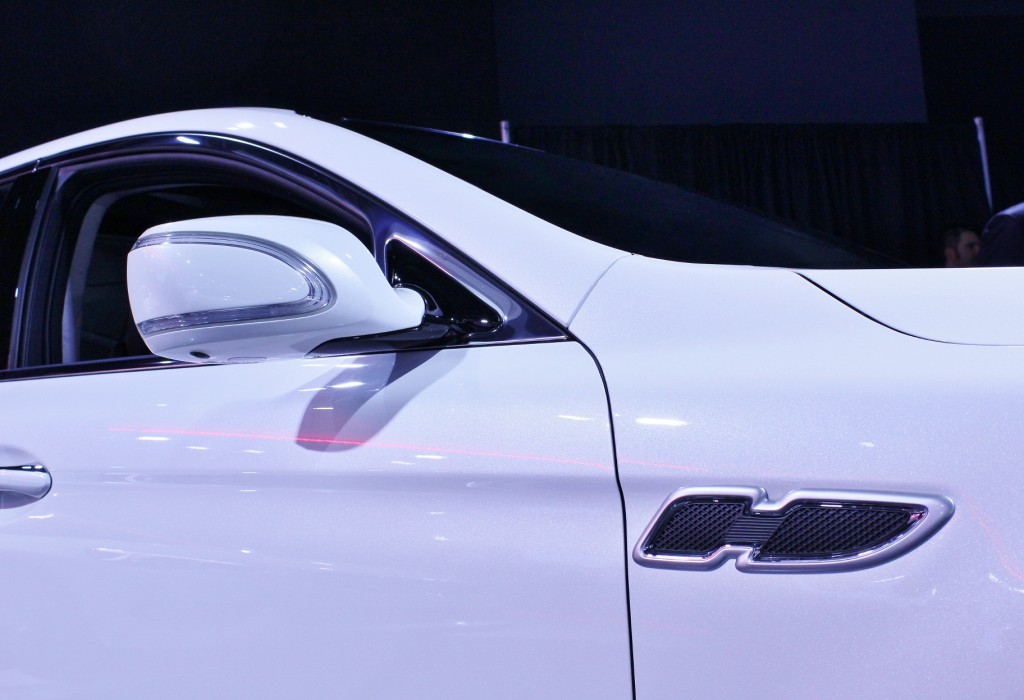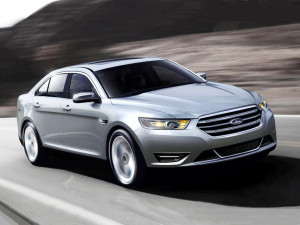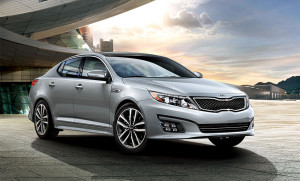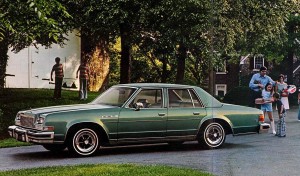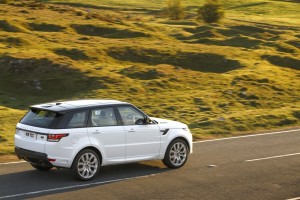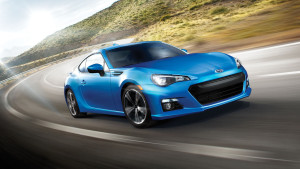The following review appeared in the Oye! Times automotive section on Feb. 26, and can be viewed here.
Is the Mazda3 GT as good as it gets when it comes to affordable, sporty compact cars?
It could very well be.
Two weeks in the 2015 Mazda3 GT revealed the taught, shapely sedan to be a comfortable, refined performer, and a surprisingly good vehicle for tackling the worst of Canadian winters.
It’s not hard on the eyes, either.
When the third-generation Mazda3 debuted for the 2014 model year, the cartoonish ‘smile’ that adorned the front end of the previous generation had been wiped away, replaced with a mature and subtly elegant look.
Mazda likens its company-wide KODO design language to a cheetah pouncing on prey, which isn’t a bad metaphor. Viewed from any angle, the Mazda3’s long hood, short deck and curvaceous flanks hint at the proportions of the classic Jaguar E-Type of the 1960s – another famous automotive cat.
Equipment

Mazda’s CONNECT system allows the driver to control infotainment systems from this console-mounted dial.
The GT is the Mazda3’s top trim level, and comes with all the goodies needed to stand out from the rest of the lineup.
Under the hood lies Mazda’s SKYACTIV-G 2.5-litre four-cylinder engine, a high compression (13:1) direction-injection powerplant that makes a smooth 185 horsepower and 184 foot-pounds of torque.
A six speed manual transmission comes standard, and is the gearbox you’d want in a sporty car like this. With short, notchy throws and a lower gearing than the optional six speed automatic, the transmission helps the driver wring the most fun out of the GT’s engine.
The GT ditches the 16-inch wheels of the base and mid-range Mazda3 in favour of 18-inch alloy rims, wrapped with wide 215/45R18 rubber.
This tester came with the optional luxury group, which added leather upholstery and interior trim to the GT’s long list of standard features, which includes a power moonroof, fog lights, 9-speaker Bose audio system, heated seats, rear backup camera and power everything.
To aid the driver, the GT employs Mazda’s heads-up driving display, which projects the vehicle’s speed onto a flip-up glass panel above the instrument panel. Gimmicky but useful, it helps keep your eyes on the road.
The seats, shod in black leather with red stitching, were a little flat on the bottom, but were infinitely adjustable.
The rear seats folded down to expand the 12.4 square foot trunk, which is on the small side for its class (No worries, as the Mazda3 comes in a hatchback version for those wanting more cargo space).
The nerve centre of the Mazda3 uses a 7-inch touchscreen display mounted atop the dash (eyes on the road, people!), controlled by a large rotary switch located on the console. The MAZDA CONNECT infotainment system controls all radio, audio input, navigation and wireless connectivity functions, and was easy to get used to.
Besides being user-friendly, the CONNECT system serves to de-clutter the dash, which is reserved mainly for the dual-zone climate controls.
That sparse but expansive dash, coupled with the tasteful use of shiny bits and decent quality interior trim pieces, made the Mazda3 GT look and feel like a low-end German luxury car. That’s not a bad thing to be compared to.
Driving impressions
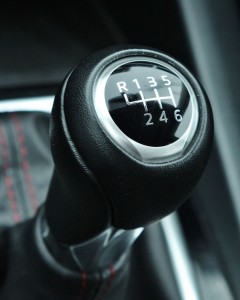
Lower gearing helped the Mazda3 respond quickly in city driving and reduced the need for downshifting.
If isolation from engine and road noise is a sign of luxury, then the Mazda3 GT comes close to attaining that status.
The SKYACTIV-G engine only lets on that its running when the throttle is opened up, and even then there’s little vibration or harshness to be felt through the vehicle.
The 2.5-litre never feels like it’s working all that hard, and under brisk acceleration, the engine note in the cabin remains muted.
Fitting for a model with a reputation for sportiness to uphold, the GT’s suspension is on the firm side, which makes softening winter road cracks and frost heaves a challenge.
The worst pavement imperfections make their presence widely felt, an issue compounded by the GT’s wide low-profile tires, but they were at least buffered somewhat. The cure – a softer suspension – would run the risk of turning a sporty car into a marshmallow and ruining summer driving fun.
Despite the war zone roads and frequent snowfalls, the Mazda3 felt planted and stable in all conditions. It felt, actually, like it was several hundred pounds heftier than it was.
Mazda’s use of ultra-high-tensile steel in key areas of the body (it’s the first automaker to do so) makes for a stronger, lighter vehicle, and the GT tips the scales at a lean 2,980 pounds.
On the highway and around town, the steering remained heavy and on-centre, with no tendency for the car to wander, even in heavy crosswinds.
That heavy steering helped keep the GT pointed forward in deep snow, while the Michelin X-Ice snow tires our tester came with deserve a lot of credit for keeping their grip.
Unlike some traction control systems, the electronic nanny keeping the GT in check didn’t shut down the party prematurely. Corrections to wheel slip and skids were quite subtle – enough to keep the driver firmly in control while still making the GT a fun vehicle to drive, even in deep snow.
Despite the performance-geared manual transmission, the GT’s gas mileage didn’t stray from factory numbers. On one 100 kilometre highway trip (both 4-lane and 2-lane), the GT returned 6.4 litres/100 km, which matches its official rating.
Another trip of similar distance returned 6.1 litres/100 km. In the city, the GT is rated at 9.3 litres/100 km, which is achievable in light traffic (with at least a few green lights).
Thanks to a taller gearset, Mazda3s equipped with the automatic transmission return better fuel economy, both in the city and on the highway. Even thought the majority of GT buyers will go this route, not having an available stick shift in this model would seem like sacrilege.
The ‘fun and sporty’ reputation Mazda developed over the years is still present in the Mazda3 GT, but in a more mature form. With the model’s adolescence now in the rear-view, the newly refined Mazda3 is ready to be appreciated by an adult audience.



